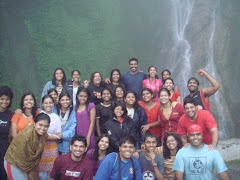http://www.jktourism.org/cities/ladakh/gen.htm june 7
Area: 97,000 sq kms out of which nearly 38,000 sq. kms are under Chinese Occupation since 1962.
Population: Approx. 2.40 lakh in the 2 districts of Leh & Kargil.
Languages: Ladakhi including Balti / Purgi, Shina or Dardic, Urdu / Hindi.
Ethnic composition: Mongoloid/Tibetan, Dardic and assorted Indo-Aryan elements.
Altitude: Leh 3505 m, Kargil 2750 m
Temperature:
Maximum
Minimum
Summer
25oC
8oC
Winter
(-) 5oC
(-) 20oC
Rain-fall : 15cm, 6" (annual average)
Clothing :Cotton & light woollens in summer and heavy woollens including down-filled wind proof upper garments in winter.
Geographical Introduction Ladakh is a land abounding in awesome physical features, set in an enormous and spectacular environment. Bounded by two of the world's mightiest mountain ranges, the Karakoram in the north and the Great Himalaya in the south, it is traversed by two other parallel chains, the Ladakh Range and the Zanskar Range.
In geological terms, this is a young land, formed a few million years ago. Its basic contours, uplifted by tectonic movements, have been modified over the millennia by the process of erosion due to wind and water, sculpted into the form that we see today.
Today a high-altitude desert, shelter ed from the rain-bearing clouds of the Indian monsoon by the barrier of the Great Himalaya, Ladakh was once covered by an extensive lake system, the vestiges of which still exist on its south-east plateaux of Rupshu and Chushul, in the drainage basins or lakes of Tso-moriri, Tso-kar and Pangong-tso. But the main source of water is winter snowfall.Dras, Zanskar and the Suru Valley on the Himalaya's northern flanks receive heavy snow in winter, this feeds the glaciers from which melt water, carried down by streams, irrigates the fields in summer. For the rest of the region, the snow on the peaks is virtually the only source of water. As the crops grow, the villagers pray not for rain, but for sun to melt the glaciers and liberate their water.
Ladakh lies at altitudes ranging from about 9,000 ft (2,750 m) at Kargil to 25,170 ft (7,672m) at Saser Kangri, in the Karakoram Range. Summer temperatures rarely exceed 27C in the shade, while in winter they may at times plummet to minus 20C even in Leh. Surprisingly though, the thin air makes the heat of the sun even more intense than at lower altitudes. It is said that only in Ladakh can a man sitting in the sun with his feet in the shade suffer from sunstroke
Subscribe to:
Post Comments (Atom)

No comments:
Post a Comment